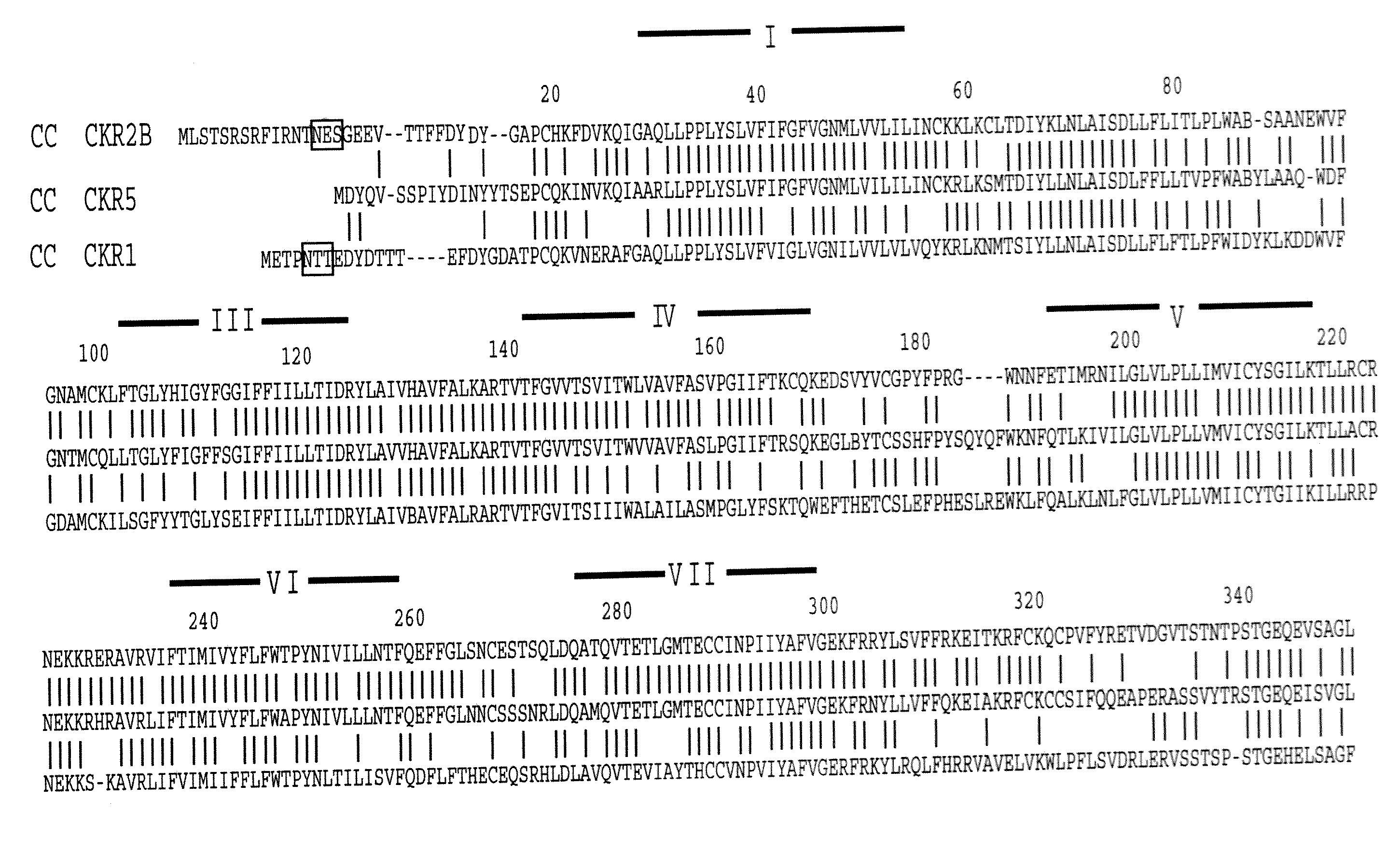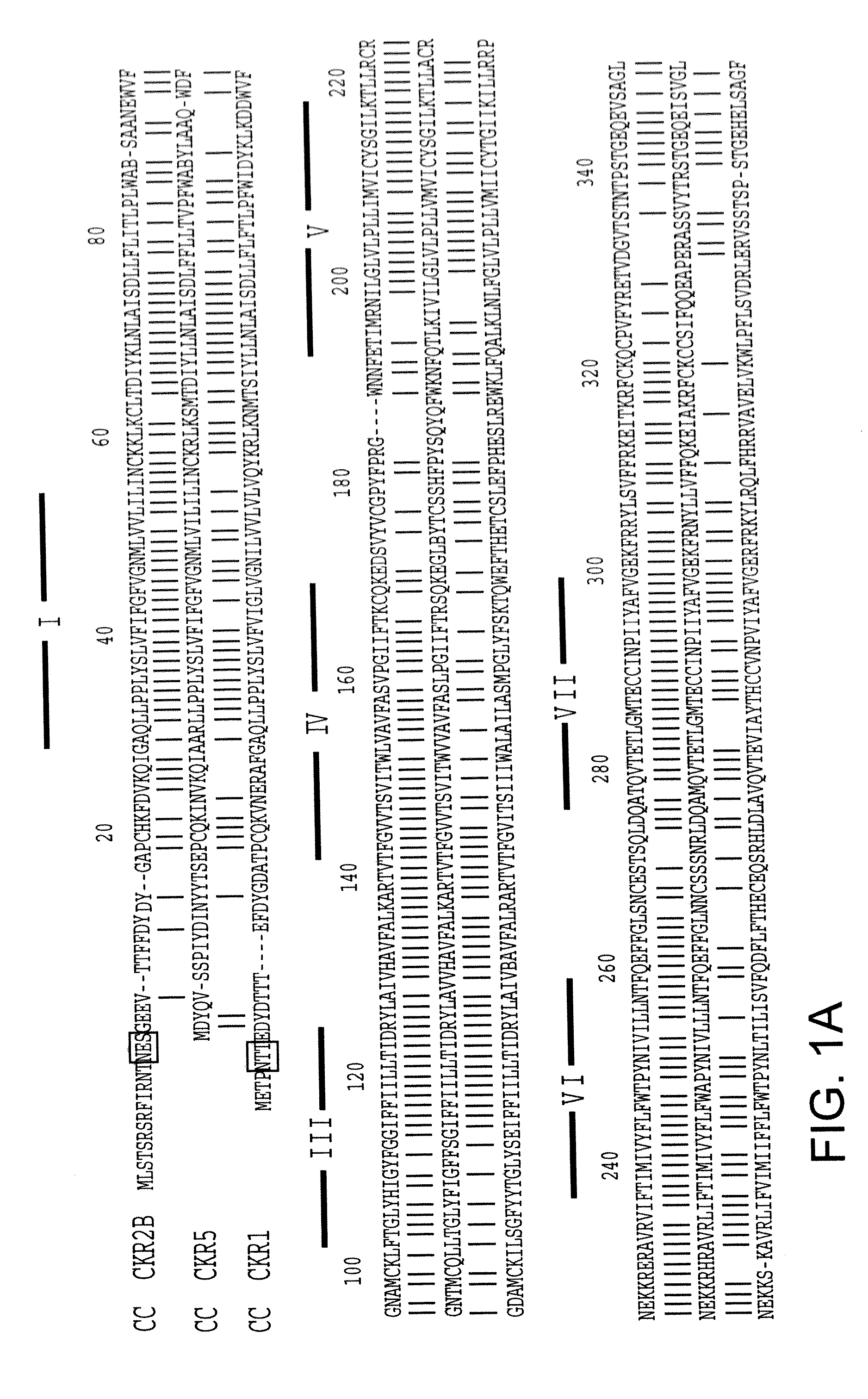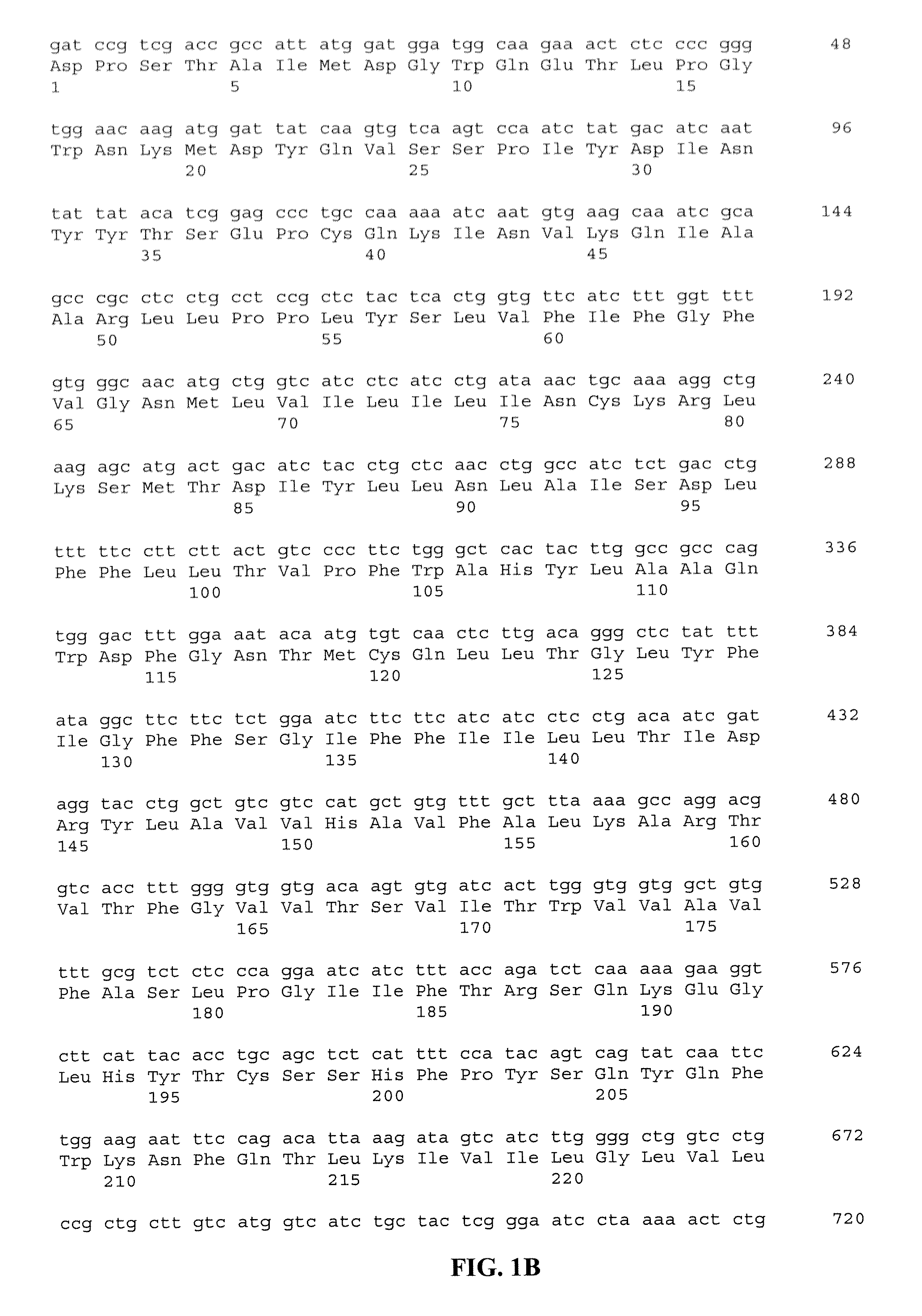CC chemokine receptor 5 DNA, new animal models and therapeutic agents for HIV infection
a chemokine receptor and dna technology, applied in the field of in vitro and in vivo models, can solve problems such as inadmissibility to hiv infection, and achieve the effect of regulating monocyte accumulation and activation
- Summary
- Abstract
- Description
- Claims
- Application Information
AI Technical Summary
Benefits of technology
Problems solved by technology
Method used
Image
Examples
example 1
Cloning and Sequence Analysis of the CCR5 Gene
[0159] Complementary DNAs were obtained from a λgt11 cDNA library (Combadiere et al., DNA Cell Biol. cit op.). One of the cDNAs obtained, designated clone 63-2, had a novel sequence highly related to CC CKR2B, but it extended only from-bp 105 to 813 of the CC CKR2B open reading frame. The 63-2 cDNA was used as a hybridization probe to screen under low stringency conditions (final wash in 5× SSPE: described by Maniatis et al., Molecular Cloning a Laboratory Manual, Cold Spring Harbor Laboratory, at 55° C. for 30 min) a λpCEV9 cDNA library prepared from endotoxin-stimulated human peripheral blood monocytes as described previously (Combadiere et al., J. Biol. Chem. 270: 29671-5 and J. Biol. Chem. 270: 16491-4 (1995)). One of the isolated clones, designated clone 8.5, matched 15 and extended the sequence of clone 63-2. A 1.4 kb fragment of the clone 8.5 cDNA was excised from the vector DNA by Bam HI and Bst XI double digestion, blunt-ended ...
example 2
Chemokine Binding to CCR5
[0165] Human embryonic kidney (HEK) 293 cells (a total of 107) grown to log phase in DMEM and 10% fetal bovine serum were electroporated with 20 μg of plasmid DNA, and G418-resistant colonies were picked and expanded as described previously (Combadiere et al., op cit.). The cell lines studied contained large amounts of the recombinant CCR5 mRNA, but lacked CC CKR3 mRNA and native 8.5 mRNA, as assessed by Northein blot analysis of total RNA using full-length cDNA probes. The methods used to create HEK 293 cell lines stably expressing CC CKR1 and CC CKR2B have been described previously (Combadiere et al., J. Biol. Chem. 270: 29671-5).
[0166] Transfected HEK 293 cells (a total of 106) were incubated in duplicate with 0.2 nM 125I-labeled RANTES, MCP-1, MIP-1α, MIP-1β or MCP-3 (specific activity −2200 Ci / miol, Du Pont / NEN, Boston, Mass.) and varying concentrations of unlabeled recombinant human chemokines (Peprotech, Rocky Hill, N.J.) in 200 μl of binding medium...
example 3
Cell Fusion Assay Suitable for Drug Screening
[0179] A vaccinia cell fusion system is used to assay the functional ability of CCR5 to confer env-mediated fusion competence to CD4-positive nonhuman cells. This assay is carried out as described in Nussbaum et al., 1994, supra. In the assay murine NIH 3T3 cells or human HeLa cells are first transfected with the plasmid pSC59.CCR5 and then co-infected with various vaccinia viruses: vTF7-3 (containing the T7 RNA polymnerase gene); vCB3 (containing the human CD4 gene); and vaccinia WR (a negative control). A different cell population is co-infected with various vaccinia viruses: vCB-21R (containing the E. coli lacZ gene under the trnscriptional control of a T7 promoter (PT7-lacZ)) along with either a vaccinia virus that encodes a Ba-L env gene from a macrophage-tropic isolate or vCB-16 (a negative control, containing a mutant env gene encoding an uncleavable, nonfusogenic unc / env).
[0180] The cell populations described above are incubated...
PUM
| Property | Measurement | Unit |
|---|---|---|
| concentration | aaaaa | aaaaa |
| diameters | aaaaa | aaaaa |
| diameters | aaaaa | aaaaa |
Abstract
Description
Claims
Application Information
 Login to View More
Login to View More - R&D
- Intellectual Property
- Life Sciences
- Materials
- Tech Scout
- Unparalleled Data Quality
- Higher Quality Content
- 60% Fewer Hallucinations
Browse by: Latest US Patents, China's latest patents, Technical Efficacy Thesaurus, Application Domain, Technology Topic, Popular Technical Reports.
© 2025 PatSnap. All rights reserved.Legal|Privacy policy|Modern Slavery Act Transparency Statement|Sitemap|About US| Contact US: help@patsnap.com



